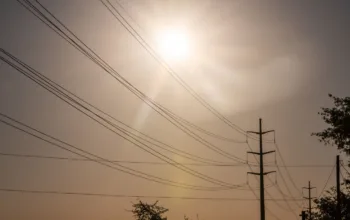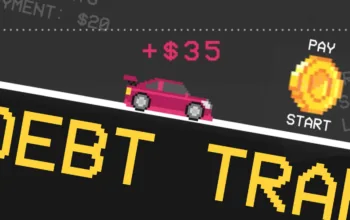Online, women eat “girl dinners” and go on “hot girl walks.” Welcome to the girlouboros.
“What kind of insufferable girl are you?” my TikTok algorithm asked me the other day. The options were “femcel,” as in someone who’s pathologically unlovable because she’s a radical feminist; “coquette,” as in, someone who wears bows and listens to Lana Del Rey, or “blogger,” as in, I guess, me. The original video appears to have been deleted (too insufferable, perhaps), but it stayed with me not because it was particularly insightful or laden with meaning but because it offered yet another “girl” on the internet for me to be, and maybe the only accurate one.
It’s the summer — or the year, or maybe the decade — of mostly made-up microtrends involving the word “girl.” People on TikTok and everywhere else on the internet are talking about their “girl dinners,” which amount to thrown-together plates of whatever happens to be in the fridge. They’re going on “hot girl walks” (a.k.a. walks). They’re having “feral girl summers.” They attempt to determine via viral Pinterest mood boards whether they’re “strawberry girls” or “cherry girls” or “vanilla girls” or “tomato girls” or “coconut girls” or “coastal cowgirls” or “rat girls” or “downtown girls” or “okokok girls” or “lalala girls” (don’t worry about those last two, it was part of a TikTok thing that lasted approximately five minutes). They girlboss and do girl math with their gorgeous gorgeous girlies during hot girl summer. They buy viral pink paste and powdered greens in efforts to become “clean girls” or “That Girls,” and when they fail, they become, evidently, “insufferable girls.”
eating my girl dinner, taking my hot girl walk, listening to my sad girl music, reading my feral girl books, going out dancing with my girlianas, getting bevvies with my girlipops, every day a slow march towards death (Womanhood)…
— em koop (@EmmaKupor) July 10, 2023
Reading them all in a row, you’d be forgiven for thinking these terms are at best silly and meaningless, and at worst obnoxious and insidious. For one, a solid percentage (if not most) of the people participating in and discussing “girl” trends are women, which therefore makes it feel slightly infantilizing and icky and like, why should 30-year-olds care what type of “girl” they are? Shouldn’t we have figured ourselves out by now? You could make the argument that pathologizing the things women and girls do smells a bit too strongly of gender essentialism; you could say that labeling normal human behavior as “girl-coded” only otherizes women in an already patriarchal world. But I would argue that both miss the point, because these supposed “girl trends” aren’t really trends at all. They’re marketing campaigns.
There’s an SNL sketch from a million years ago that illustrates this phenomenon, in which the local news invents a harmful teen trend designed to frighten parents. “They call it ‘souping,’” Bill Hader-as-news-anchor tells the camera. “Teenagers are drinking expired soup cans to get high! Every teenager is doing it, and it will kill them.” (Emma Stone, who plays the teen, says, “There’s no way teenagers are doing that”; the news anchor then invents a new moral panic around teenagers called “trampolining.”) The gist is that there is something deeply wrong with Today’s Teens, something unknowable and sinister that the current generation of adults never would have imagined being part of, and if it isn’t “souping,” then surely it’s something else. To figure out what, you’ll just have to keep watching.
@abbeysadleir How i would wear the coastal cowgirl aesthetic this summer 2023 but honestly again wear what you want everyone xxx #coastalcowgirl #coastalcowboy #coastalcowgirlaesthetic #coastalgrandmother #coastalcowgal #cowboys #cowboyboots #cowgirlboots #cowboyhat #westernfashion #westernfashioninspo #summer2023loading #summer2023countdown #summer2023fashion #summer2023trends #coastalcowgirlaesthetic #outfitideas Summer fashion trends How to wear coastal cowgirl What to wear summer 2023 Trends for summer Coastal cowgirl aesthetic Western aesthetic Coastal grandmother aesthetic #greenscreen
This is sort of what all trend journalism feels like to me these days. A single video goes viral, some people start talking about it, the media picks it up, and suddenly it’s used as fodder for the kind of lowest-common-denominator broadcast news segments where old people marvel about how foreign young people have become — and it’s not a coincidence that it’s almost always young women they’re referring to here — even though the thing they’re talking about isn’t even really happening on a scale that’s by any measure newsworthy. The result is a discourse that ends up basically amounting to “girls = wrong and/or stupid,” even when, half the time, the original video was made for people who already knew it was kind of stupid, or meant to be a joke.
Take “girl dinner,” for instance, which caused outsize controversy because it combined the concept of womanhood with eating. In May, a 28-year-old showrunner’s assistant named Olivia Maher posted a video of her dinner, a medieval peasant-inspired plate of bread, cheese, pickles, wine, and grapes that she dubbed “girl dinner.” On the term, she told the New York Times that “it feels like such a girl dinner because we do it when our boyfriends aren’t around and we don’t have to have what’s a ‘typical dinner.’” But like everything that goes viral, once it became national news, it seemed as though this was a thing young women were doing en masse, as though putting together a plate of leftovers was a novel idea that could therefore be designated as an eating disorder or otherwise problematized.
“Girl dinner” is kind of over now. The fact that I’m writing about in August it is, to use a different made-up trend from two years ago, “cheugy,” or late to the proverbial party. Soon, however, there will be another social media trend for girls, because “girls” sells.
If you’ll recall all the way back in 2015, another girl trend was pushing its way through the publishing industry. A handful of books, most famously Gillian Flynn’s Gone Girl and Paula Hawkins’s The Girl on the Train became surprise mega-hits, and suddenly stores were flooded with books marketed in attempts to match their success by slapping the word “girl” somewhere in the title. “Girl” fever wasn’t limited to publishing: The early 2010s was the time of the girlboss, of The Girl with the Dragon Tattoo movies, of TV shows like New Girl, Good Girls Revolt, 2 Broke Girls, and, despite how bizarre it is to remember the controversy it caused, Lena Dunham’s Girls. In basically all cases, the girls in question were women.
In a 2016 essay called “What Does It Mean When We Call Women Girls?,” Robin Wasserman writes that narratives about “girls” are less about the age of the female characters and more about their stories’ themes. Namely, a “girl’s” story is about the transition from girlhood to womanhood — that is, “from being someone to being someone’s wife, someone’s mother,” whether that’s the direction their trajectory goes or not. The protagonist of The Girl on the Train, for instance, “is a wife erased by marriage. Once she’s no longer ‘wife,’ she’s no one at all. Like the girls of Girls, she is unmoored. She’s the girl on the train because everything ‘woman’ about her has been stripped away.” Even Golden Girls, “a breathtaking reversal of the marriage plot,” falls within this matrix of girlhood: After the duties of wife and mother are no longer theirs, they can return to the pursuit of self-actualization. They become girls again.
@xobexstudio Replying to @N #fashiontok #tomatogirl #summeraesthetic #moodboard #hiddengems
If the absence of a spouse or child is the condition of being a girl, then it’s hardly surprising that so many modern women are referring to themselves as such. More of us are free from the assumption that traditional womanhood is something worth aspiring to. “Woman dinner” is sad; the phrase evokes an image of a tired lady, having already fed her spouse and children, eating the last scraps of whatever was left over before shoving the plates in the dishwasher. Nobody wants to eat “woman dinner.” “Girl dinner” is, crucially, fun.
Women on TikTok know what they’re doing when they dub their meals “girl dinners” or coin terms like “hot girl walk.” They know what trends have gone viral in the past — VSCO girls, e-girls, “soft girls” — and that their clickable, immediately gettable names had everything to do with why people care. They know that this year the highest-grossing movie and what may become the highest-grossing musical tour in history center on the very conundrum of women in their 30s experiencing their own versions of girlhood. They know that people will always care about what girls do, because girls are not yet women and therefore less easy to despise. Girls are more available for consumption, and girls have more available to them.
In other words, women on TikTok are thinking like the marketing teams at Simon & Schuster, analyzing the data and determining which cute name for an otherwise uninteresting habit or aesthetic has the most likelihood of going viral. What was once the province of marketing teams or journalists or magazine editors to christen cultural trends is now up to the public, and, it turns out, the public does a much more efficient job at this than the traditional gatekeepers ever could. The internet turned us all into publishers, hoping to cash in on the ineffable promise of girls yet to become women, people for whom “girl dinners” and “hot girl walks” contain a million possibilities — even if we know we all end up insufferable.
This column was first published in the Vox Culture newsletter. Sign up here so you don’t miss the next one, plus get newsletter exclusives.



